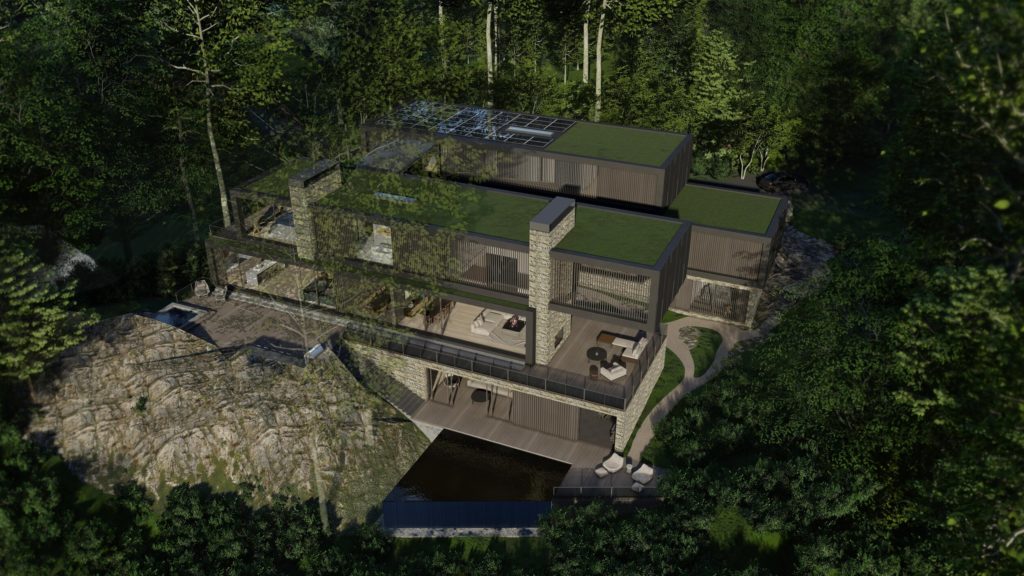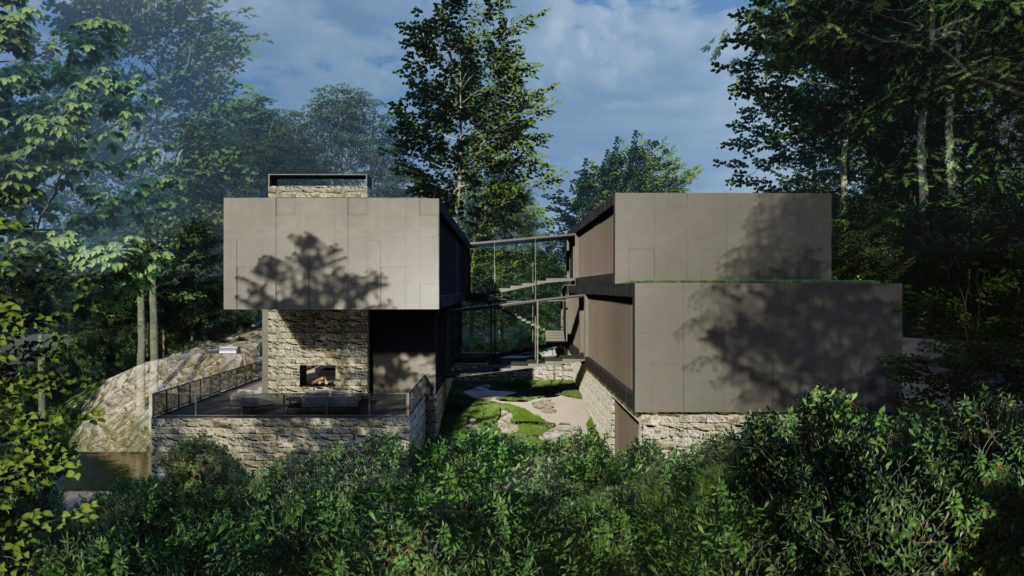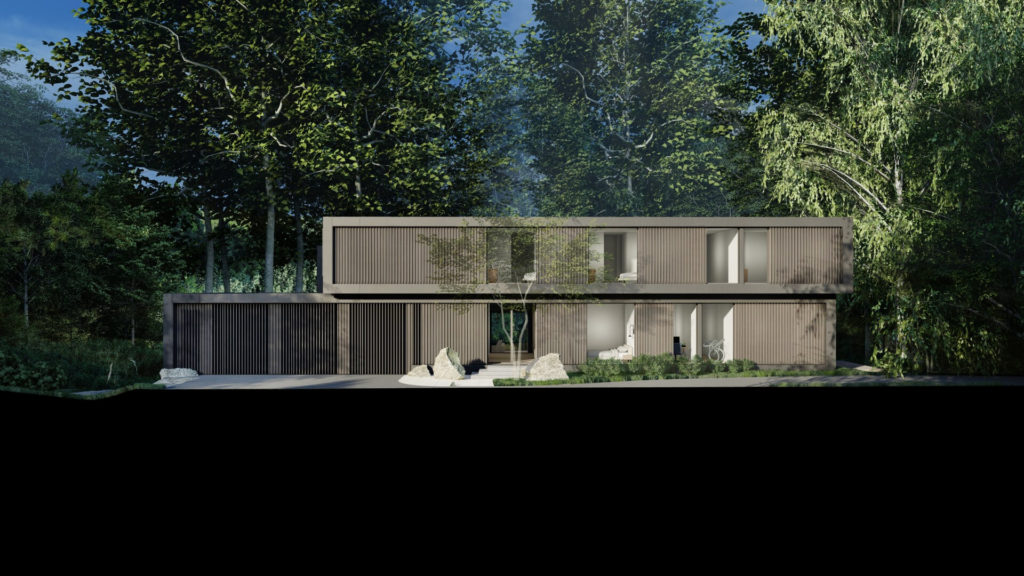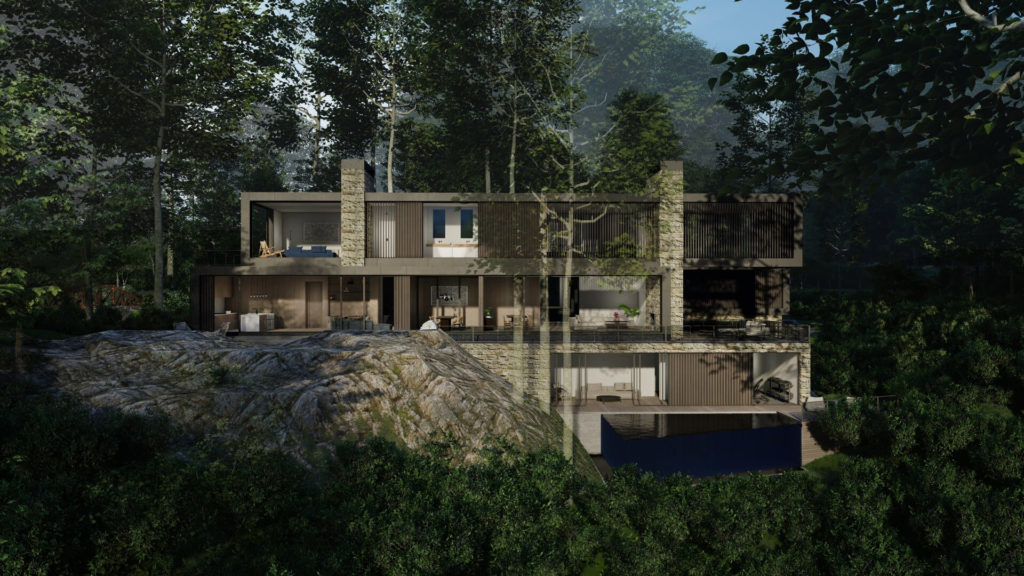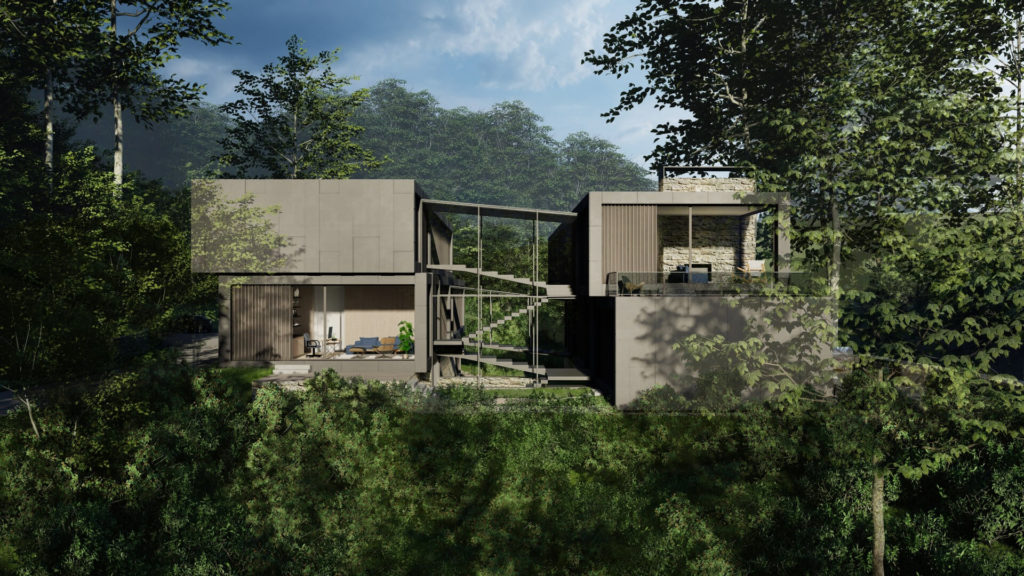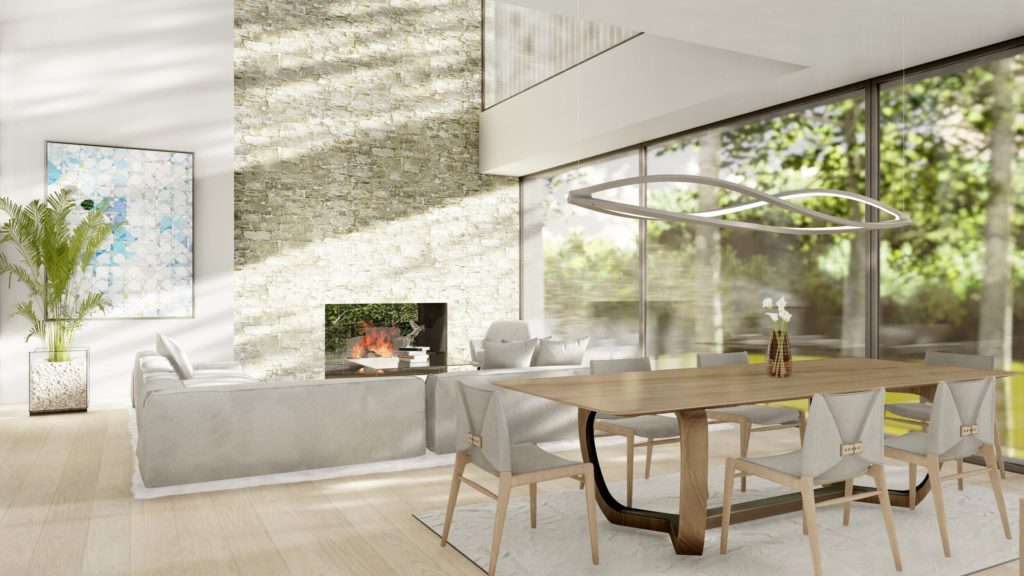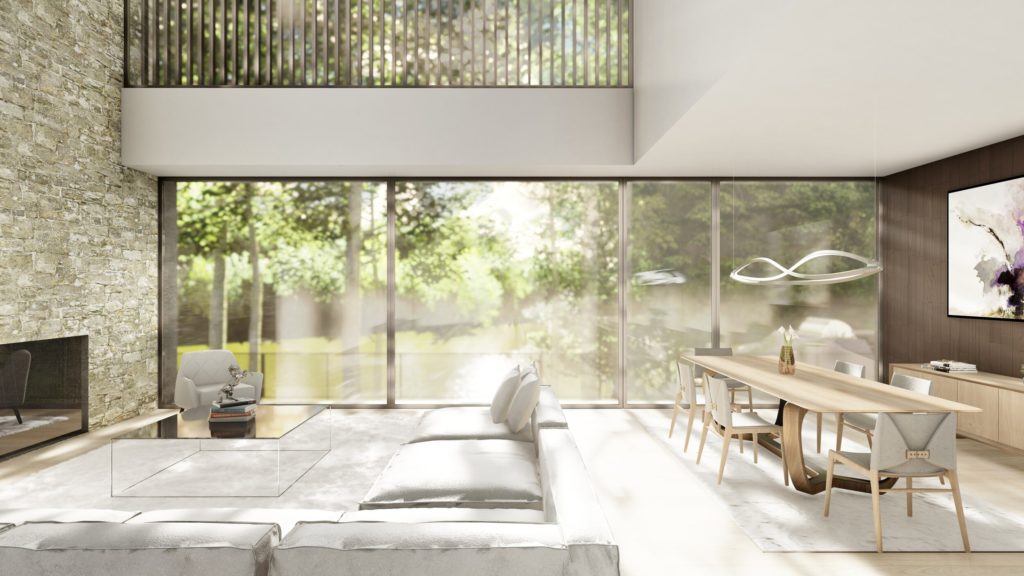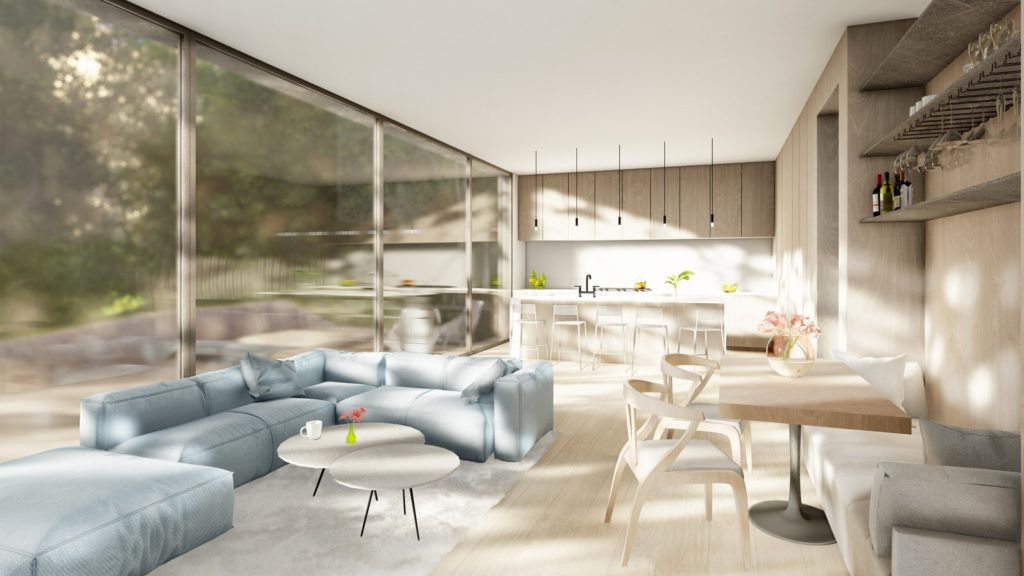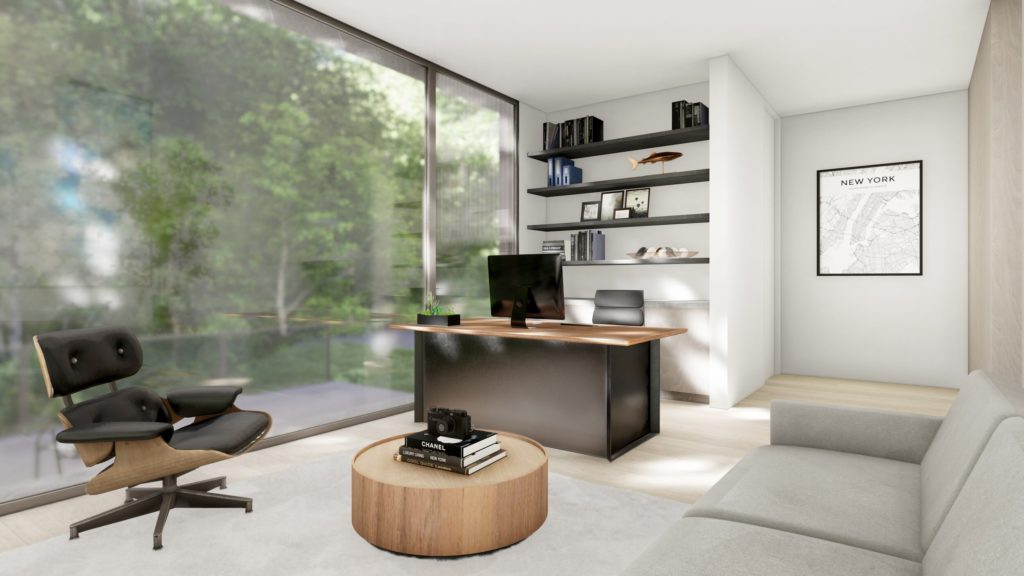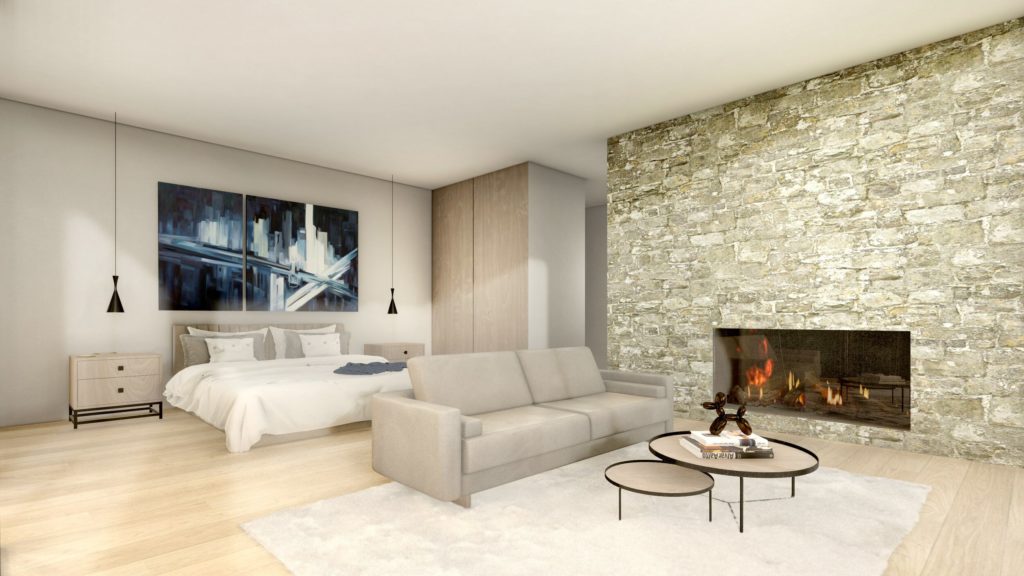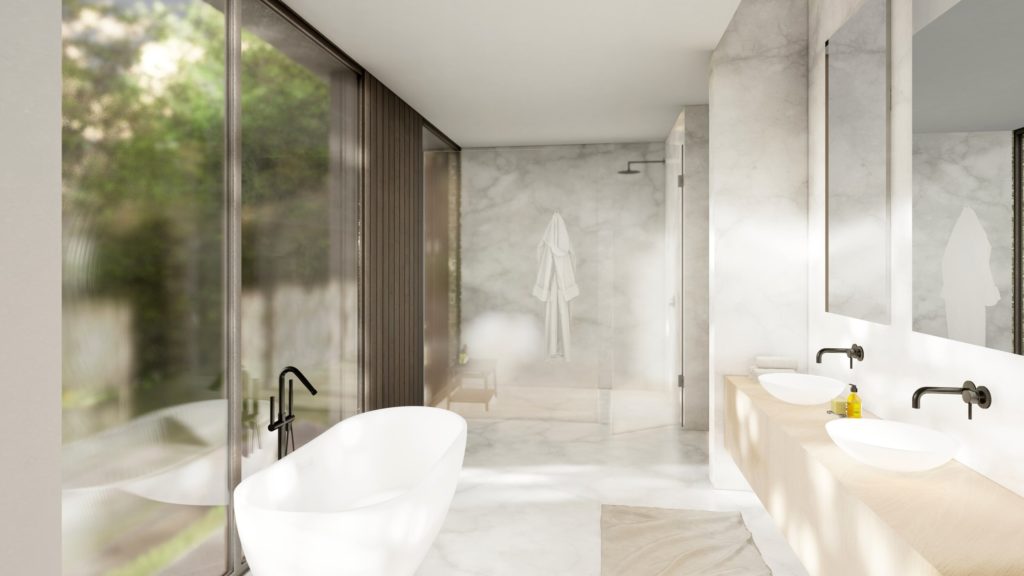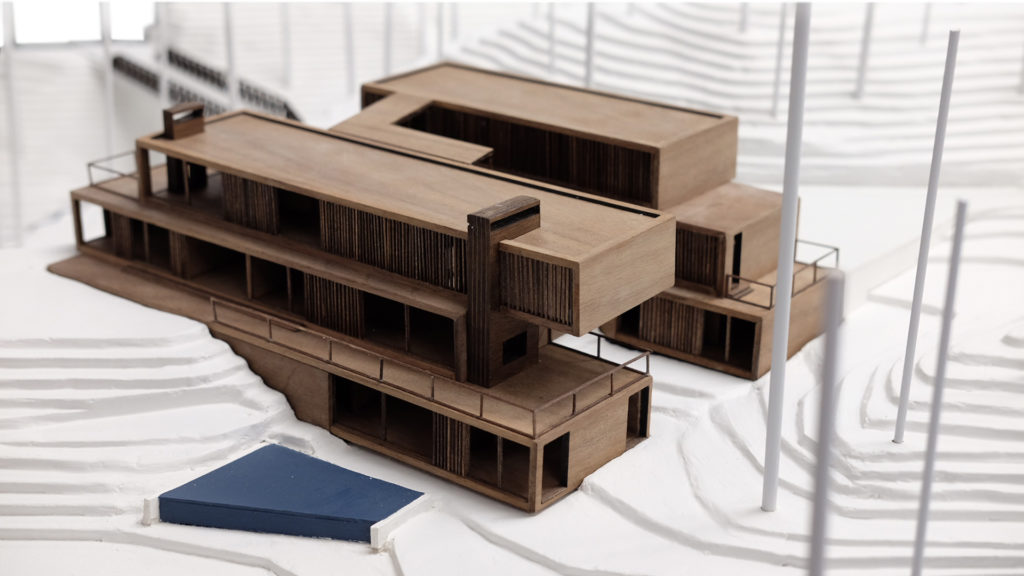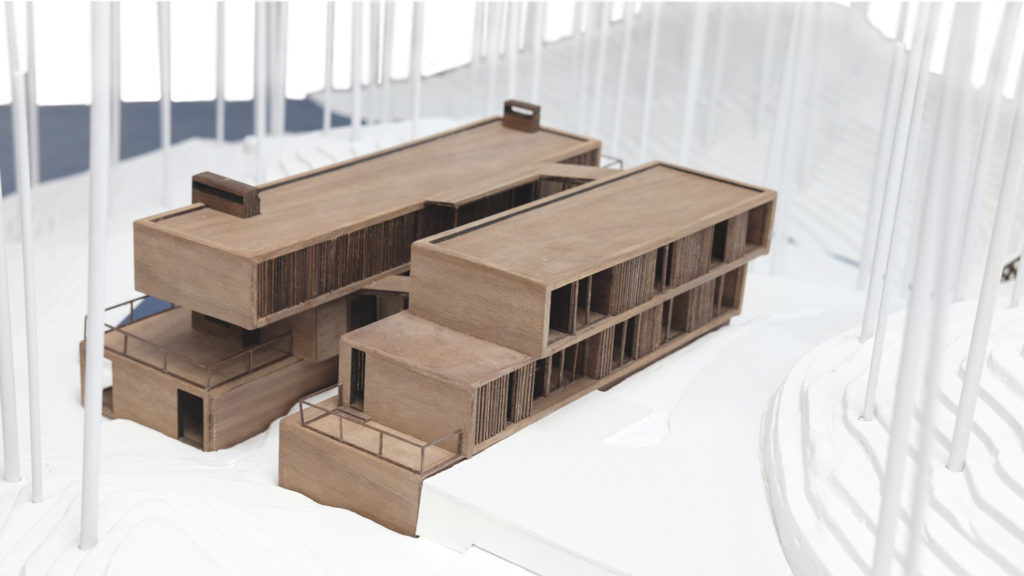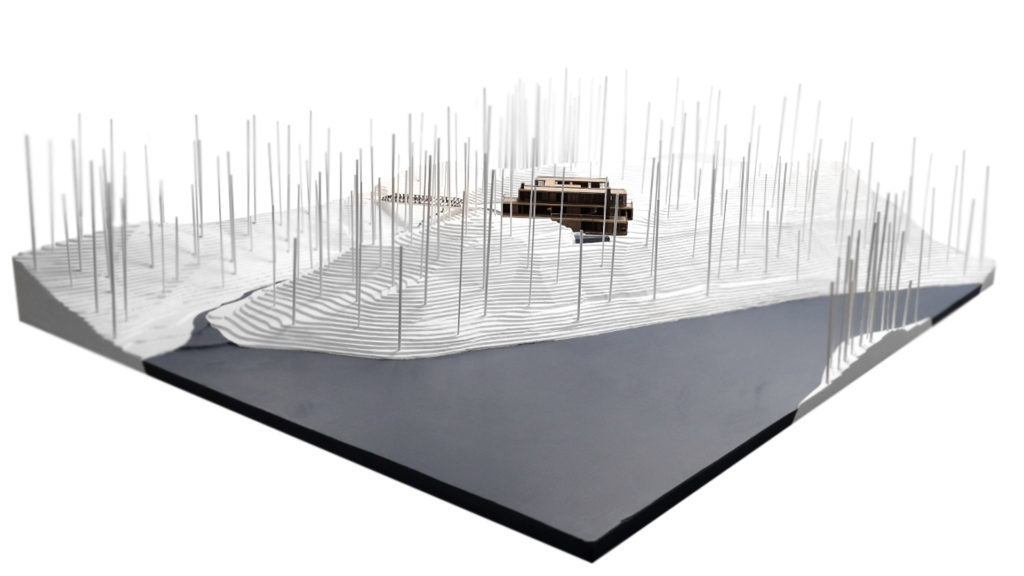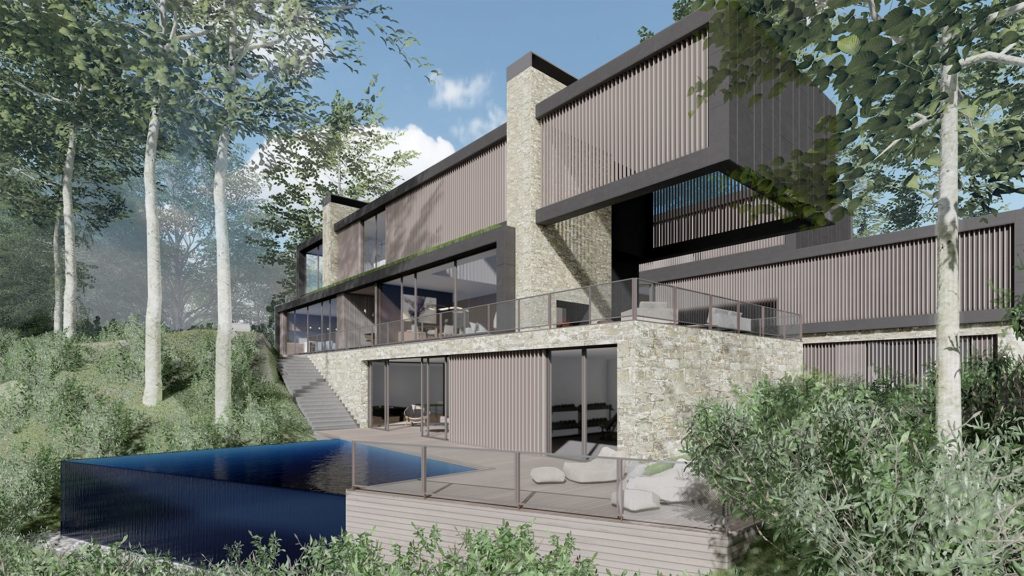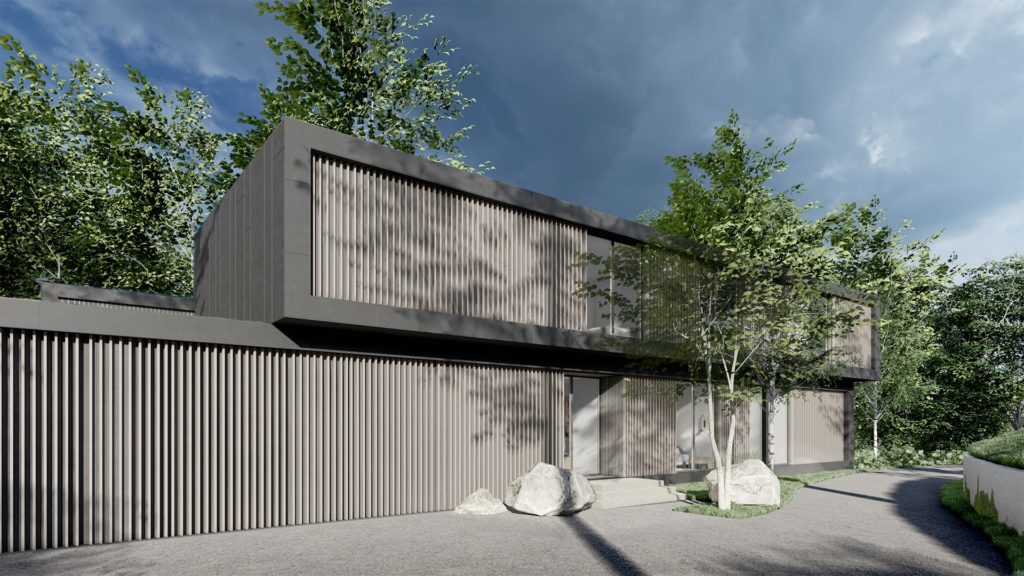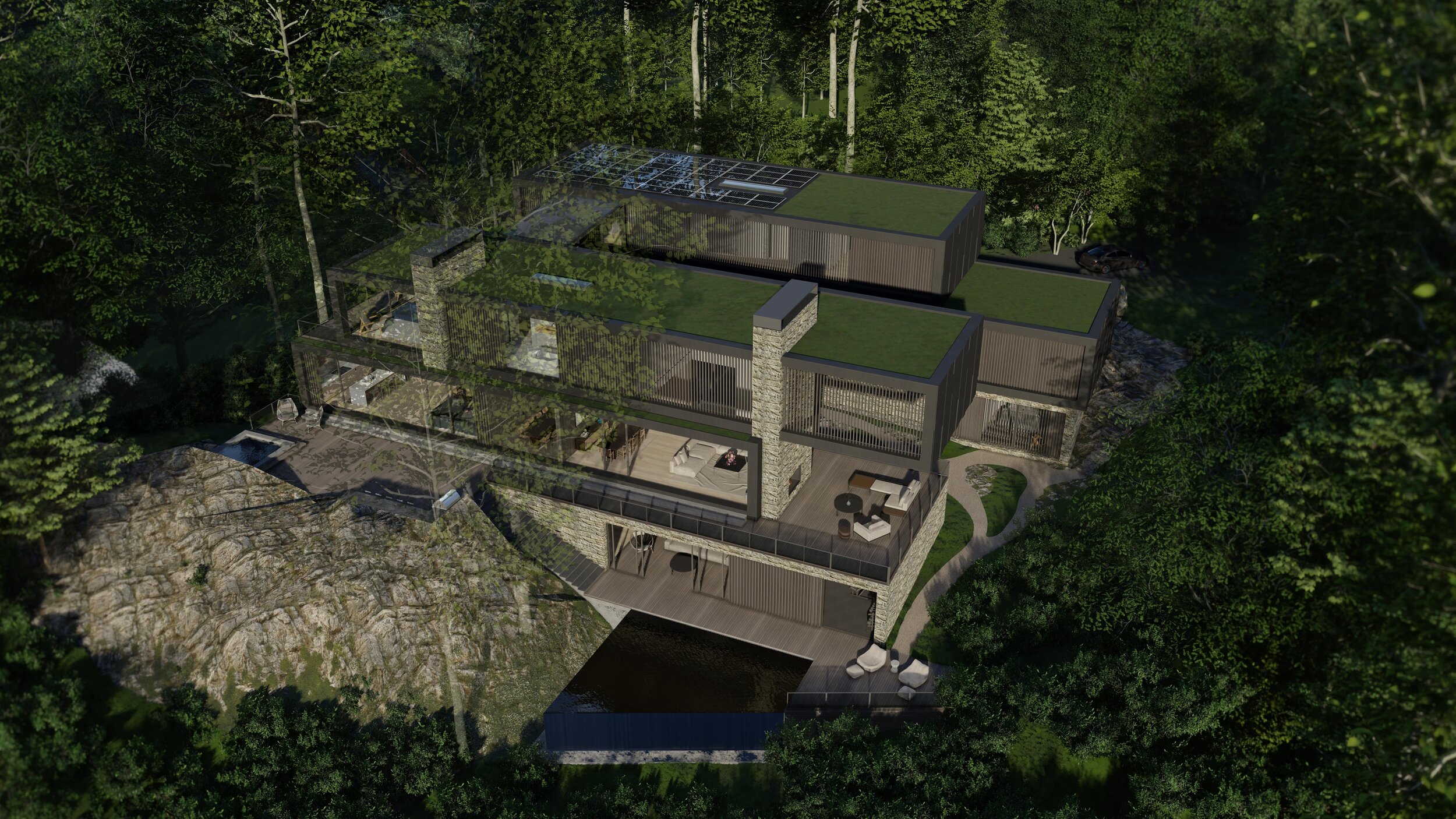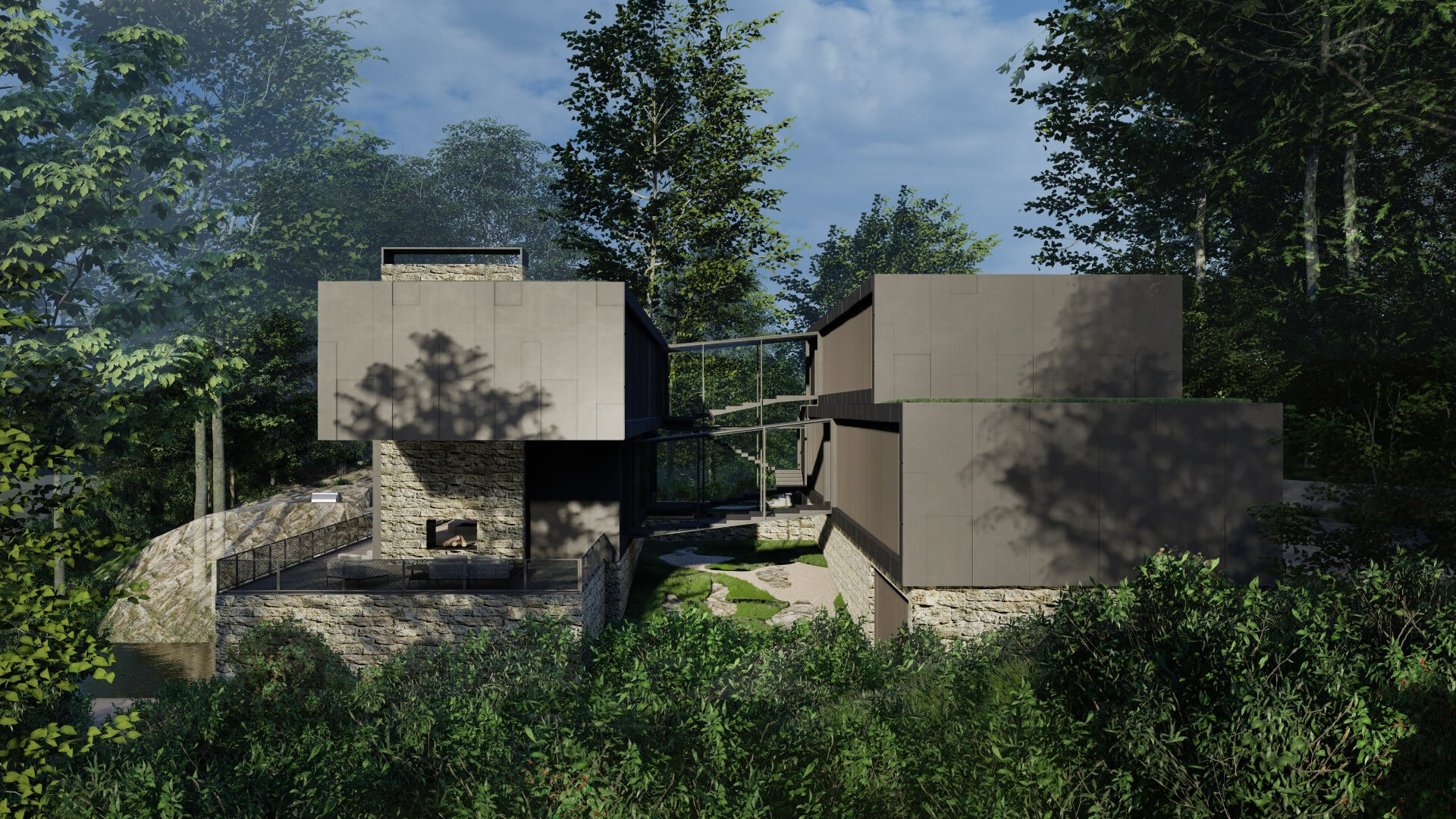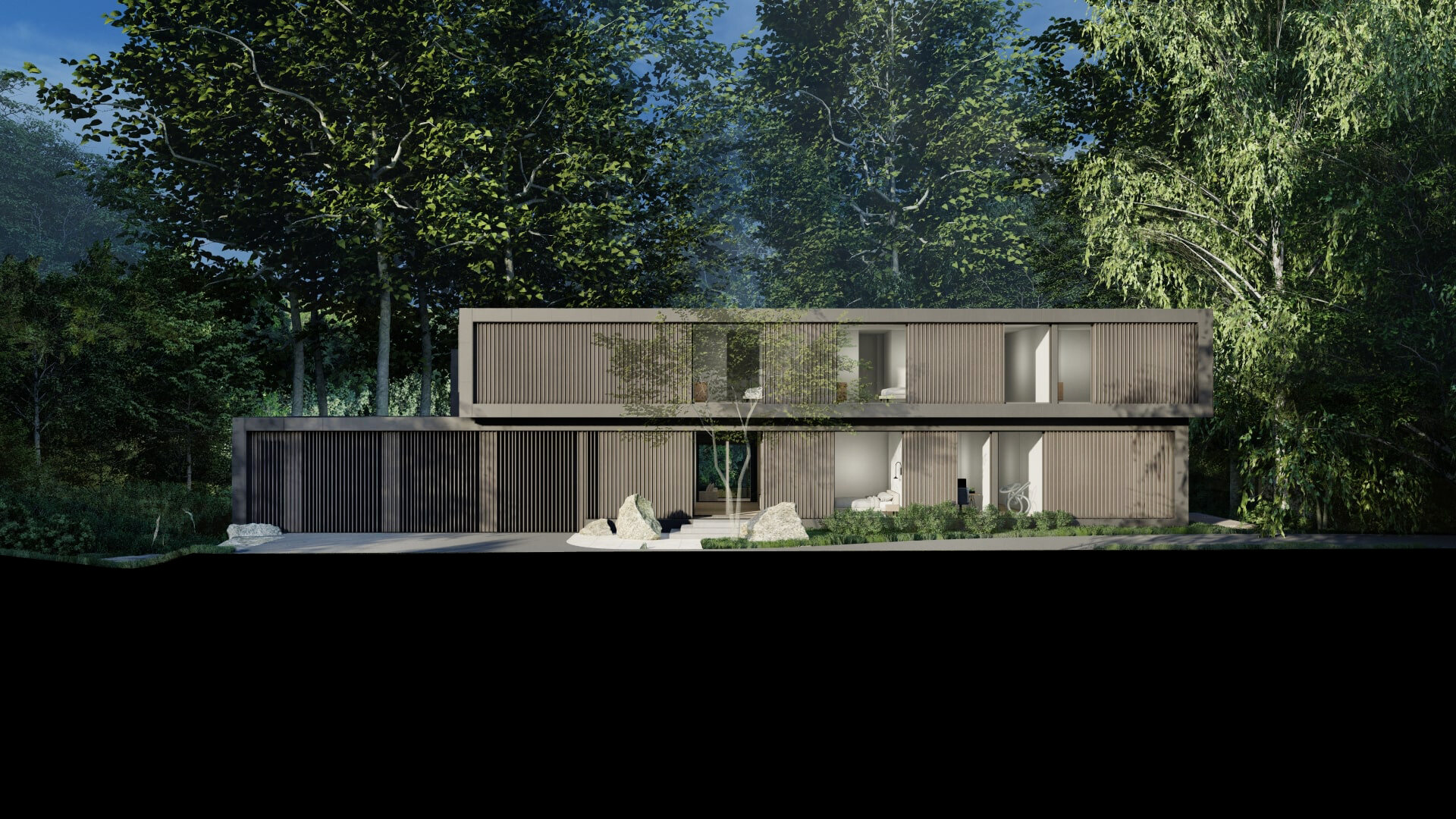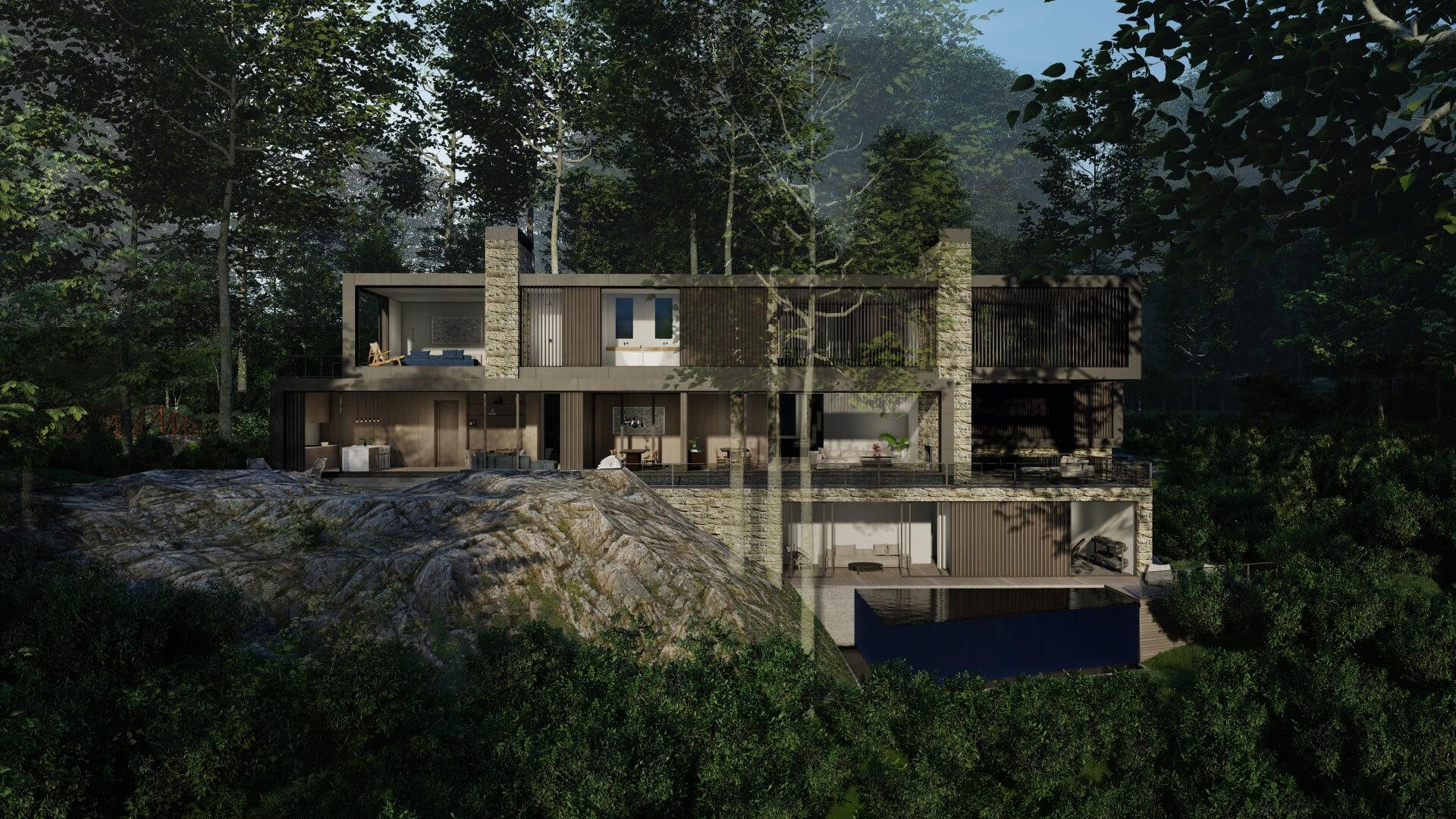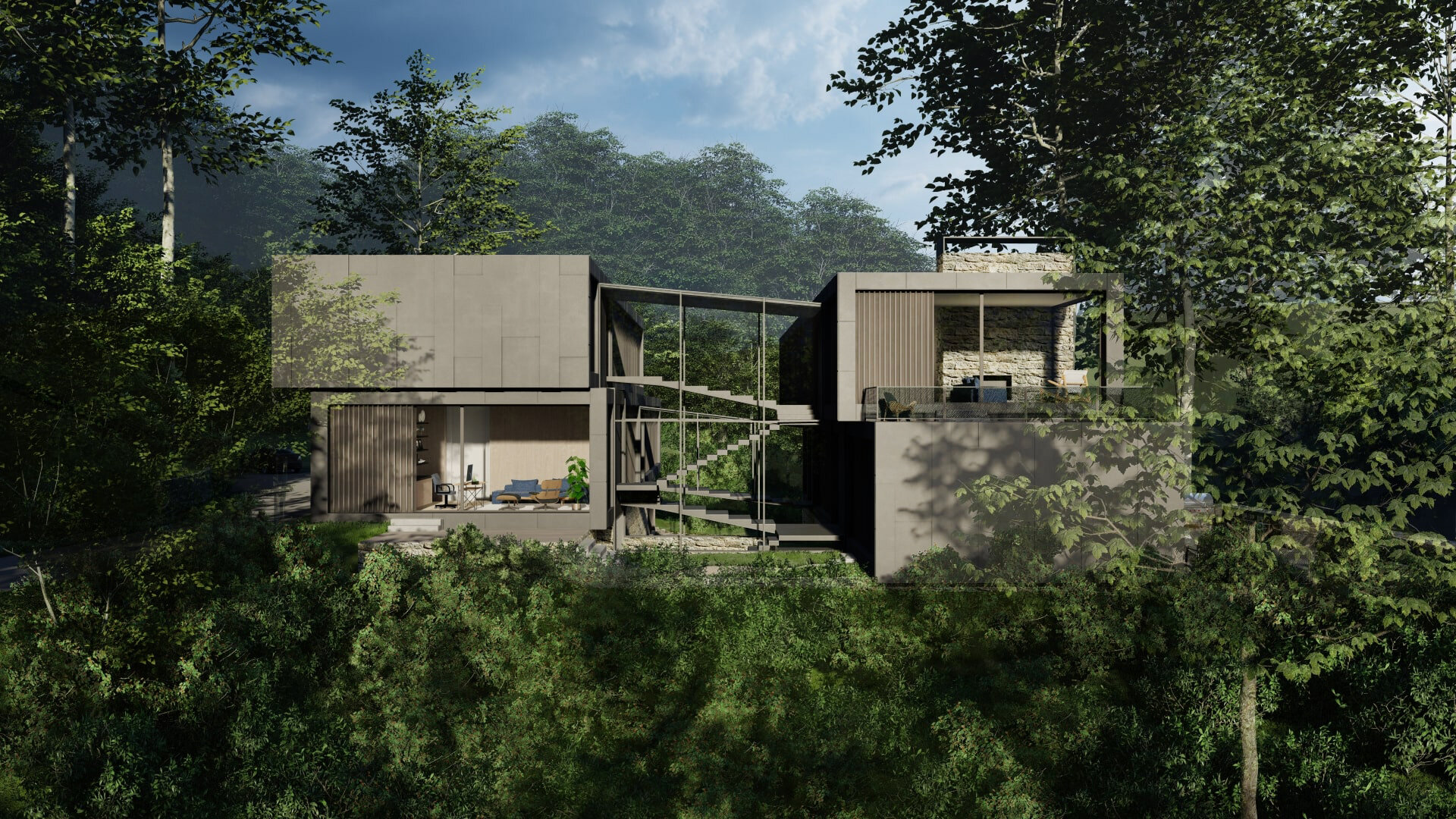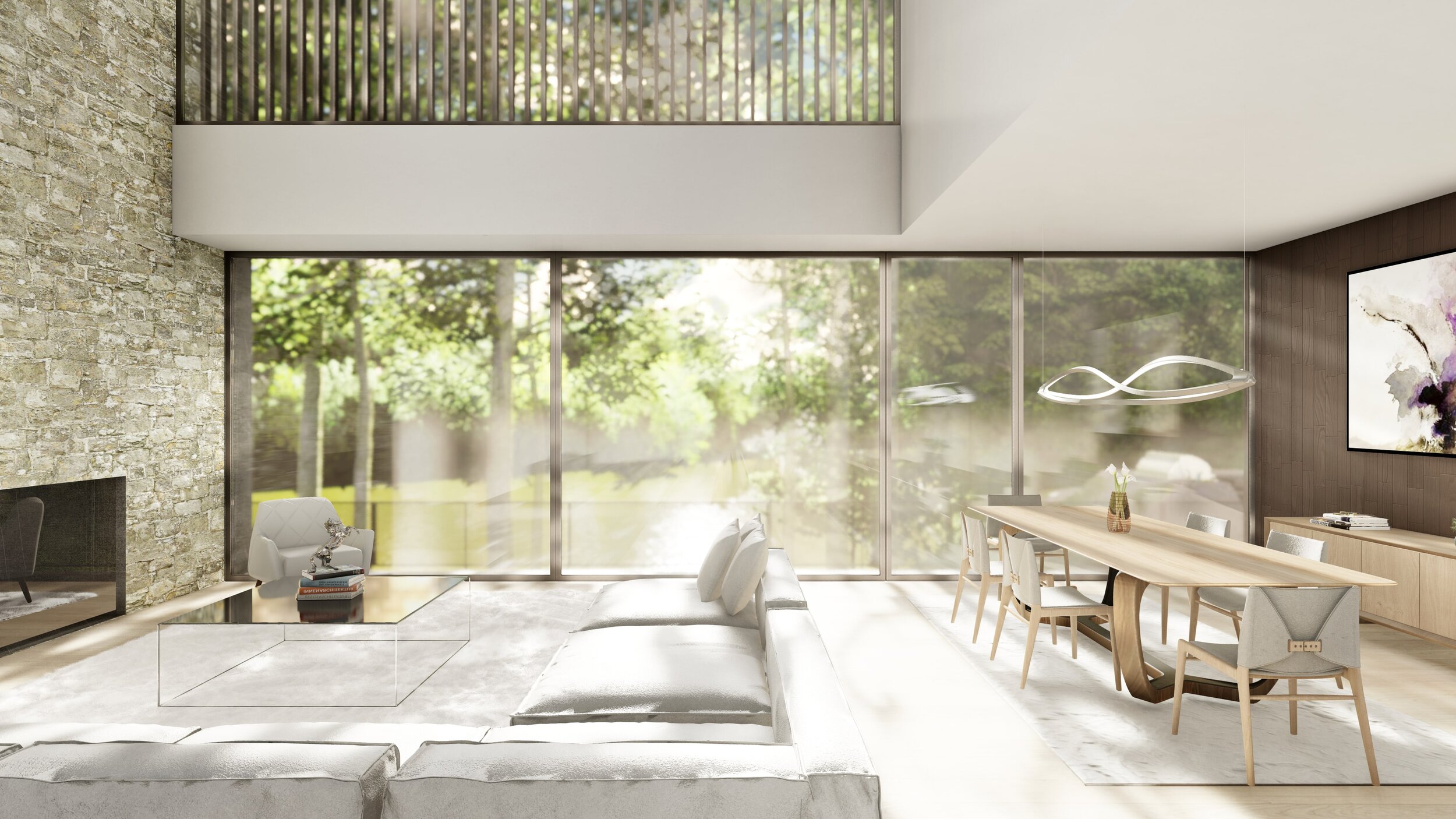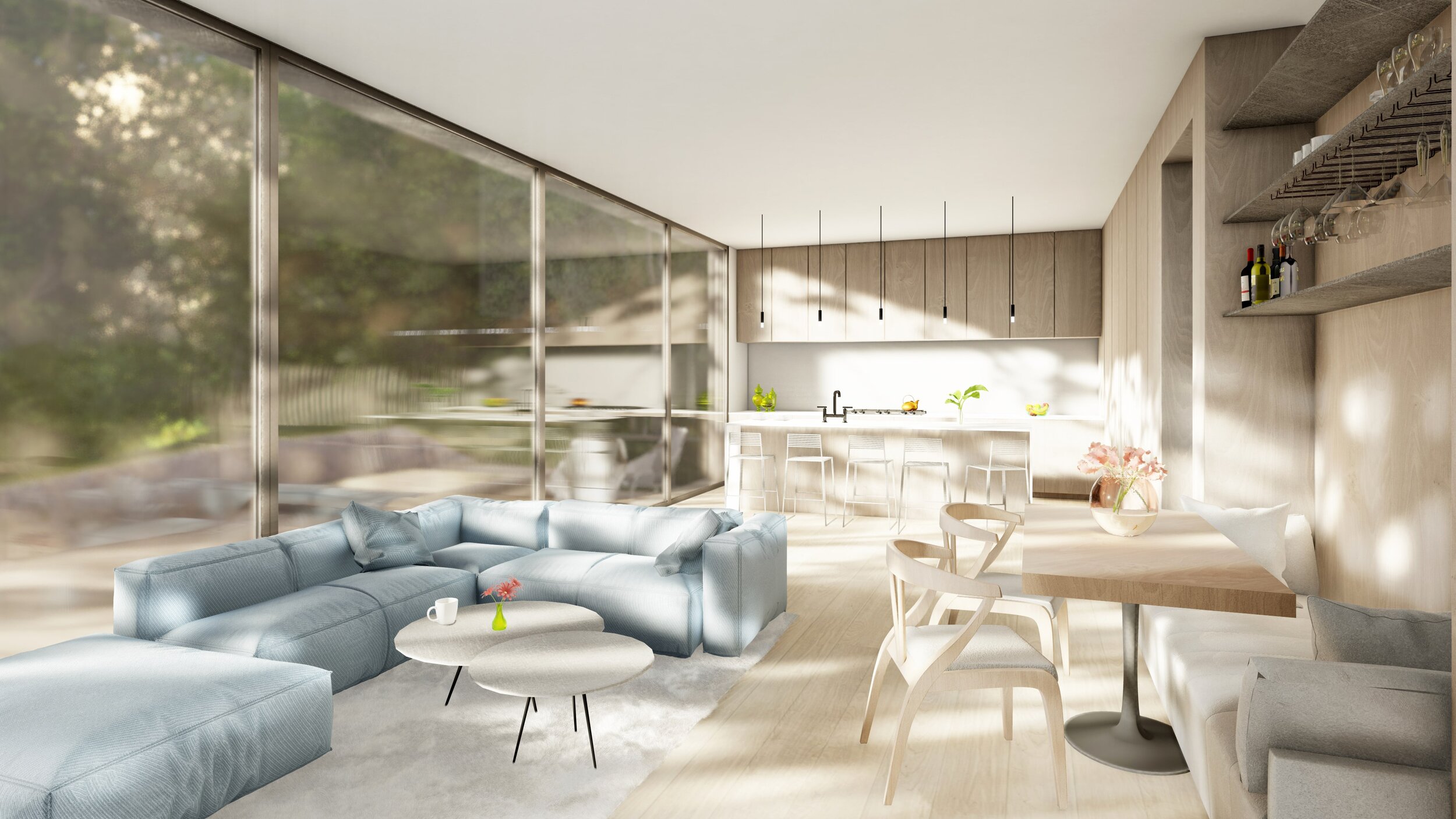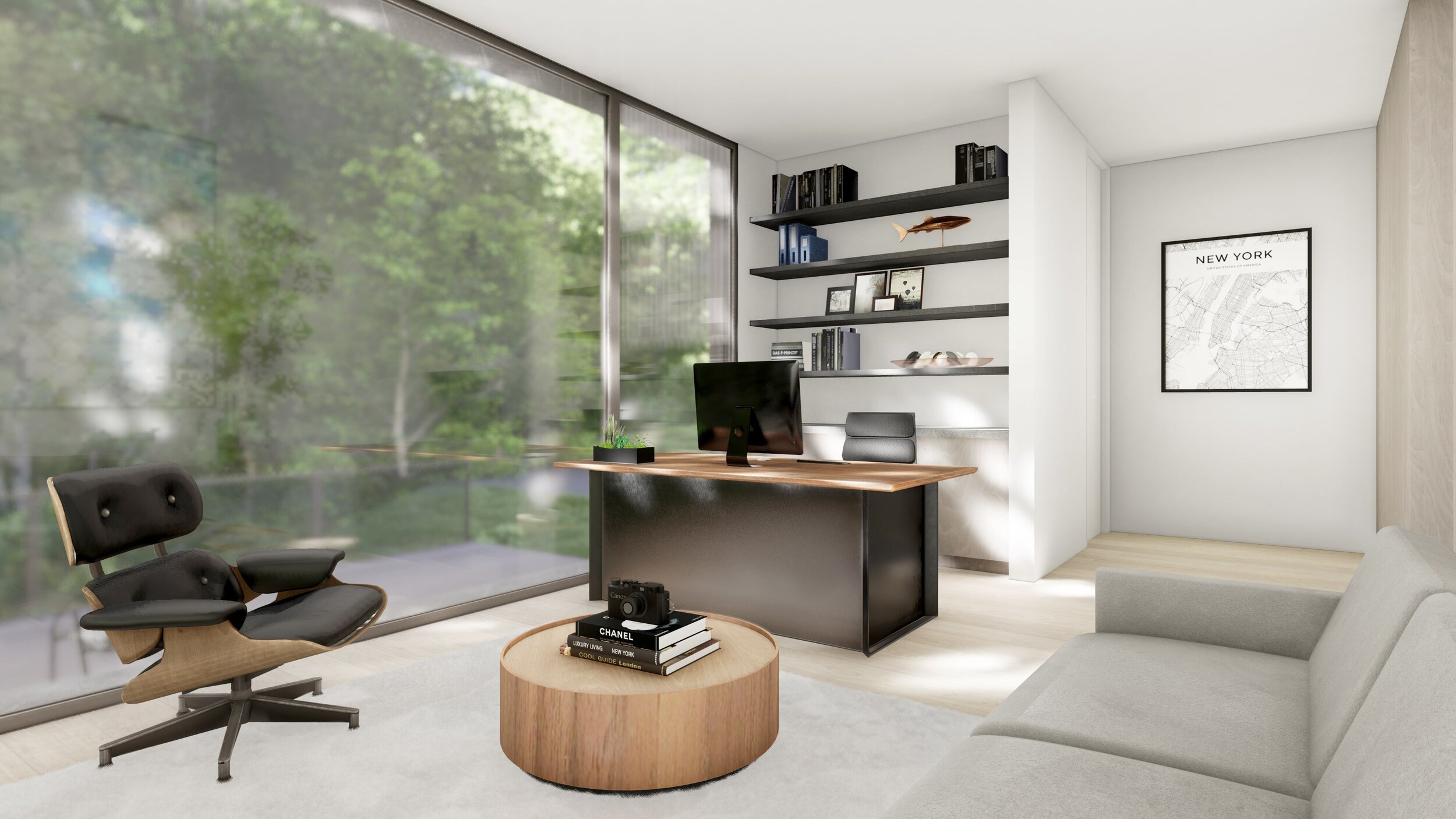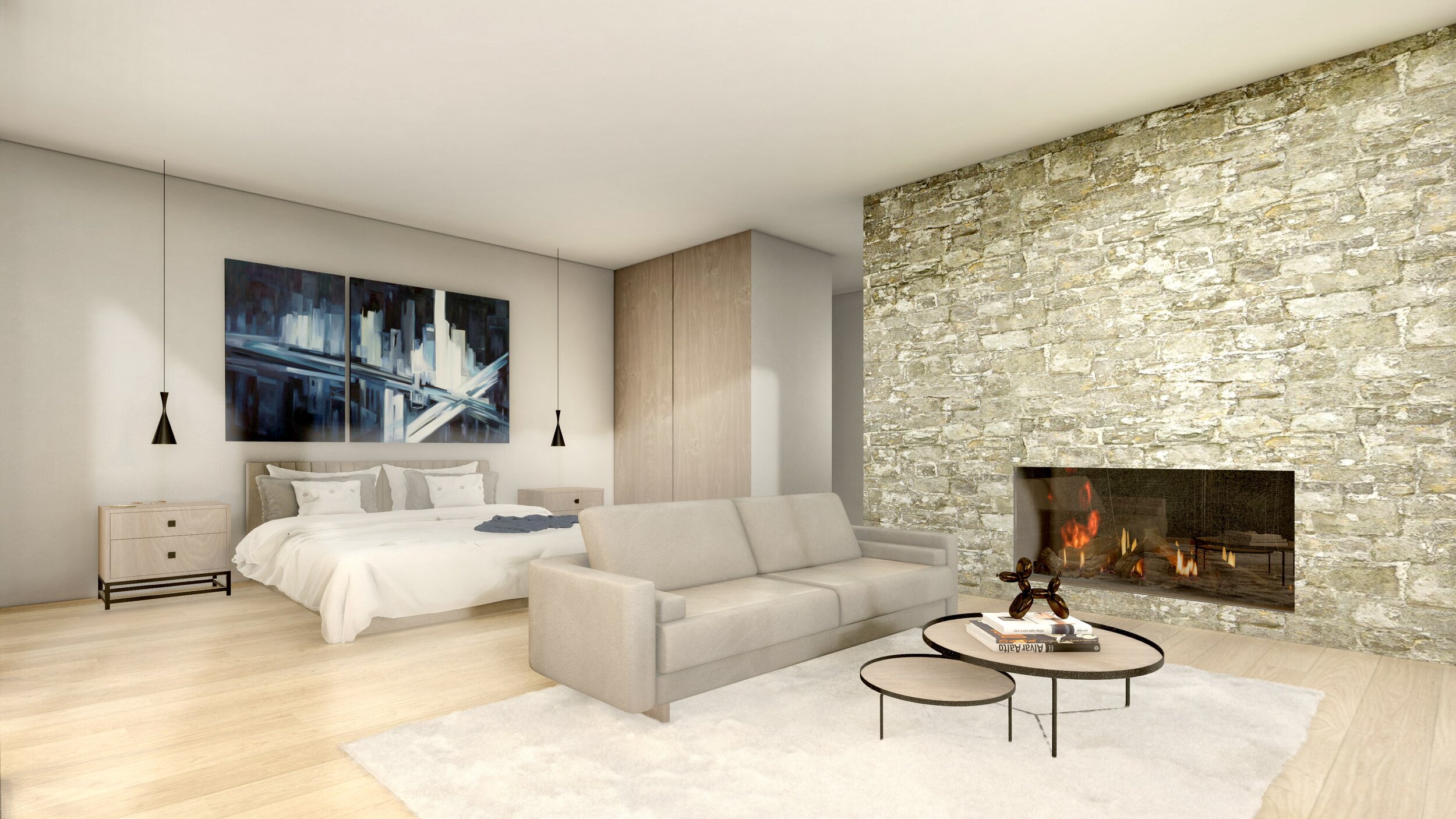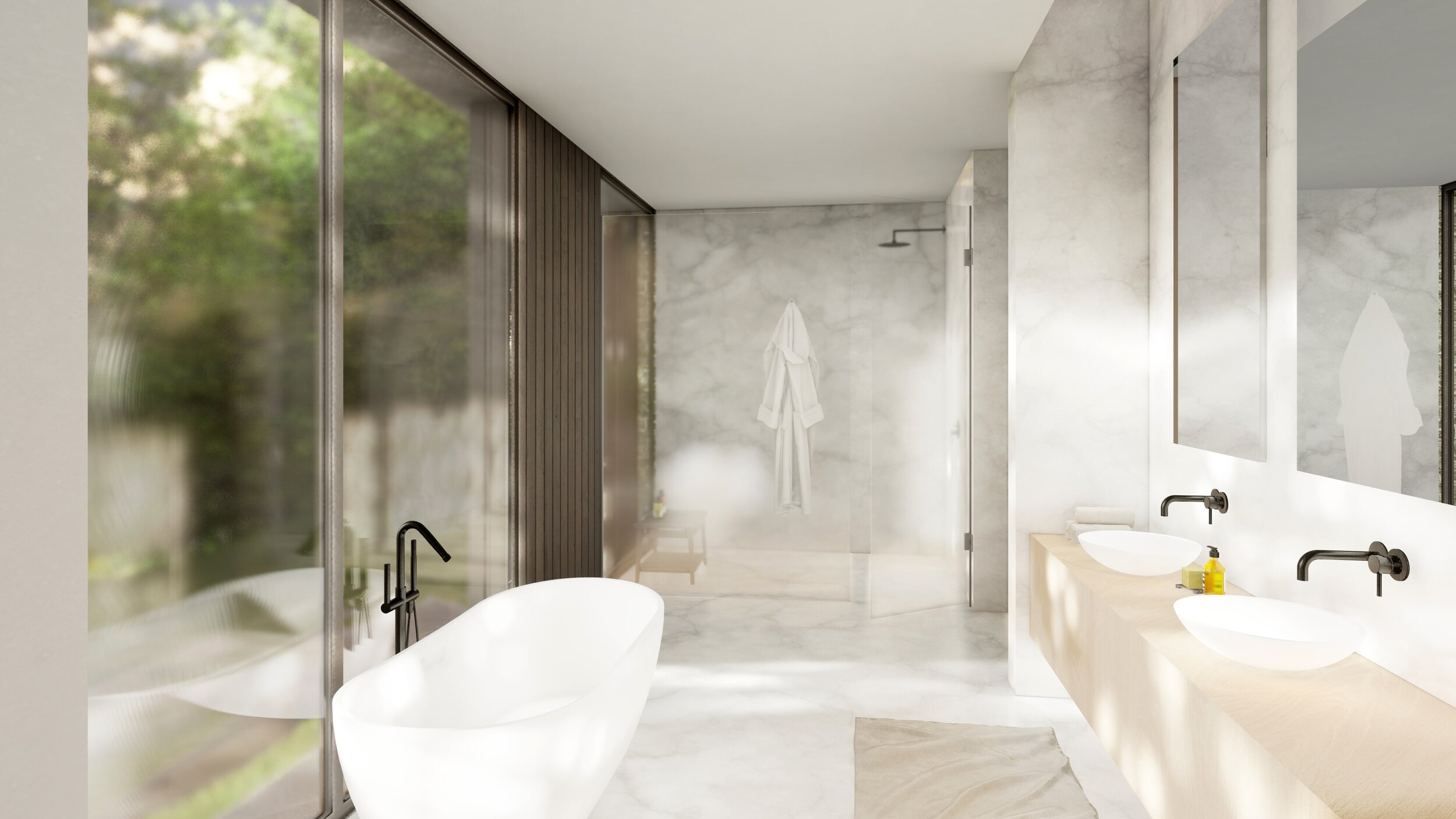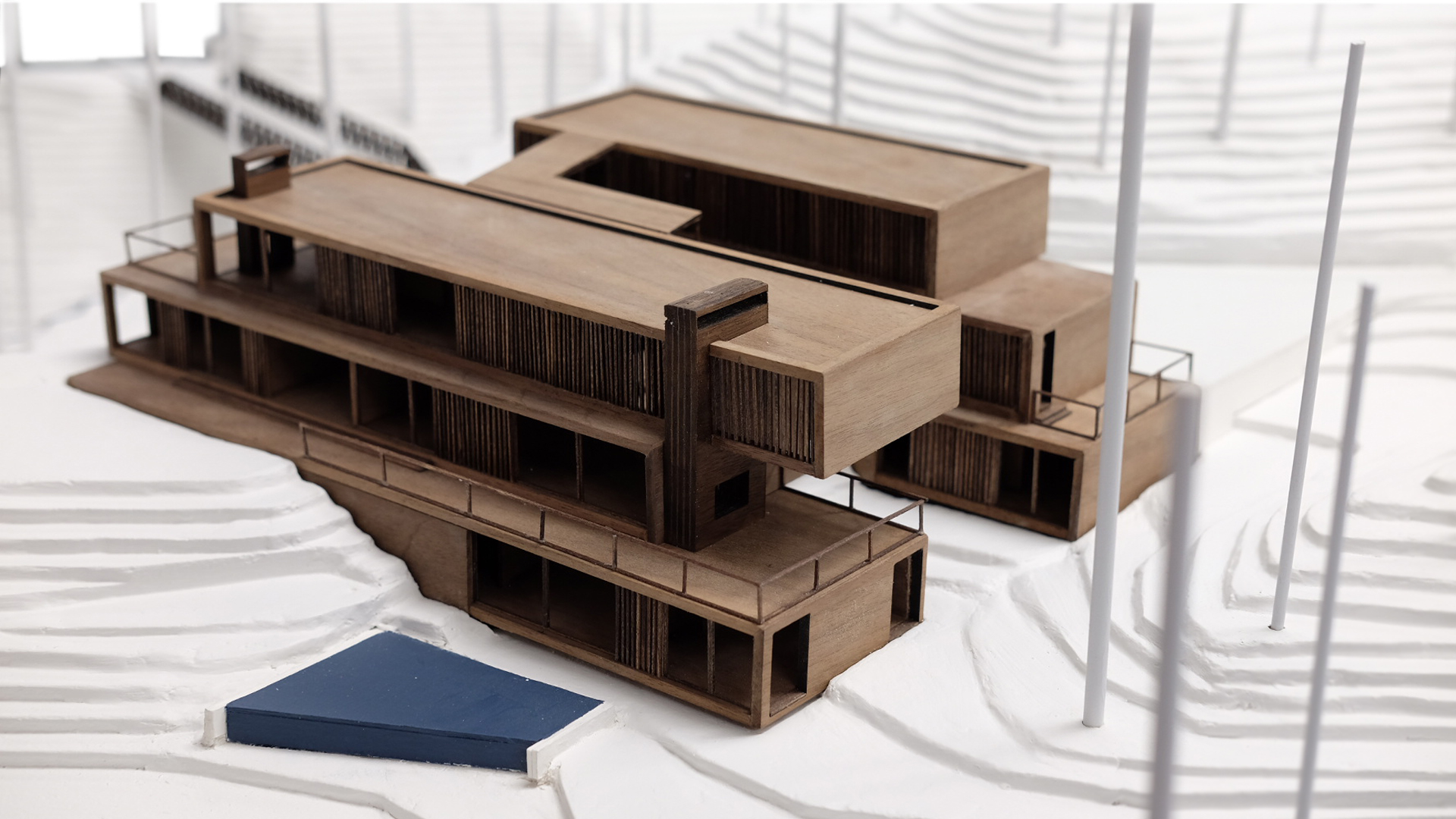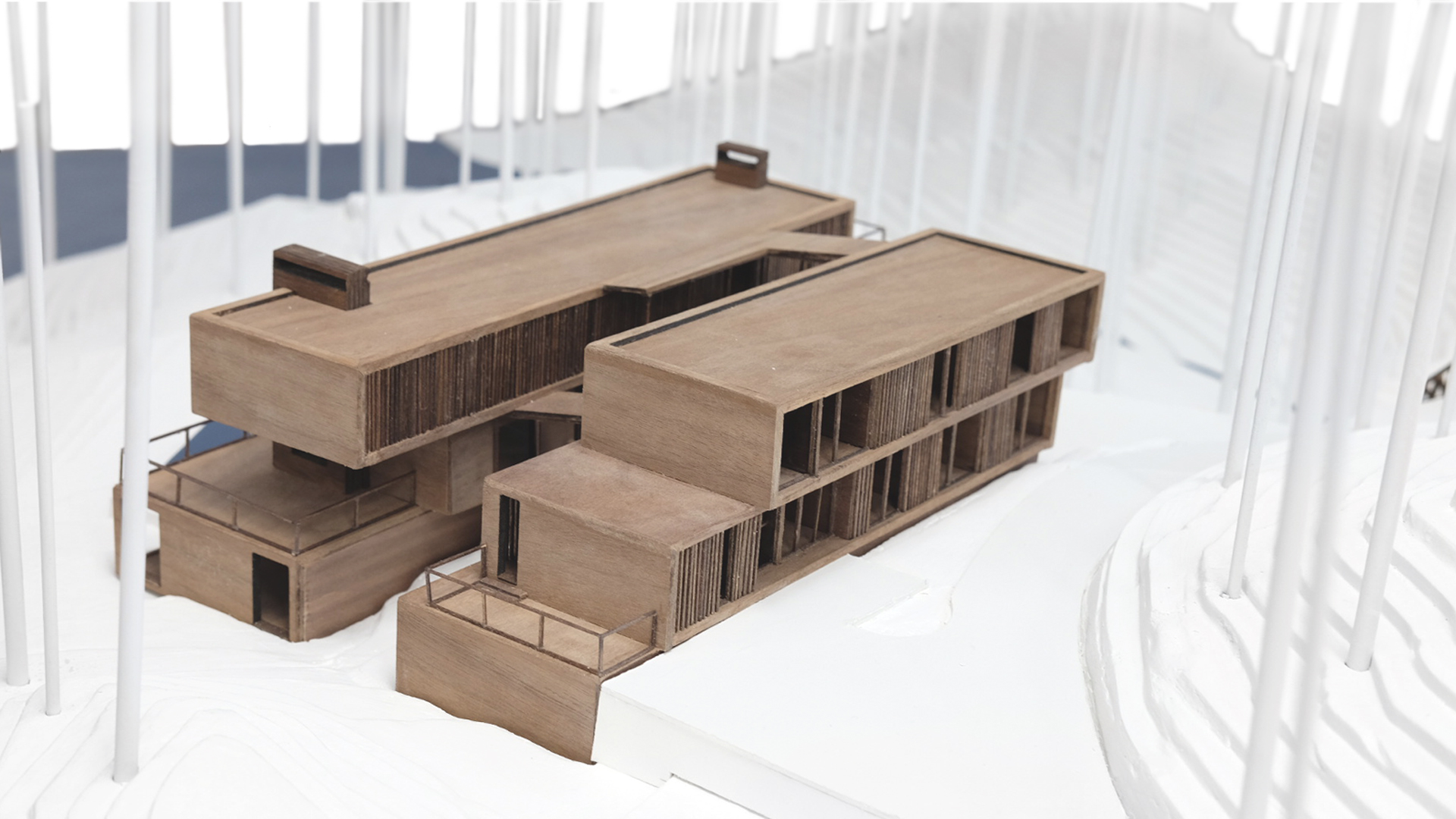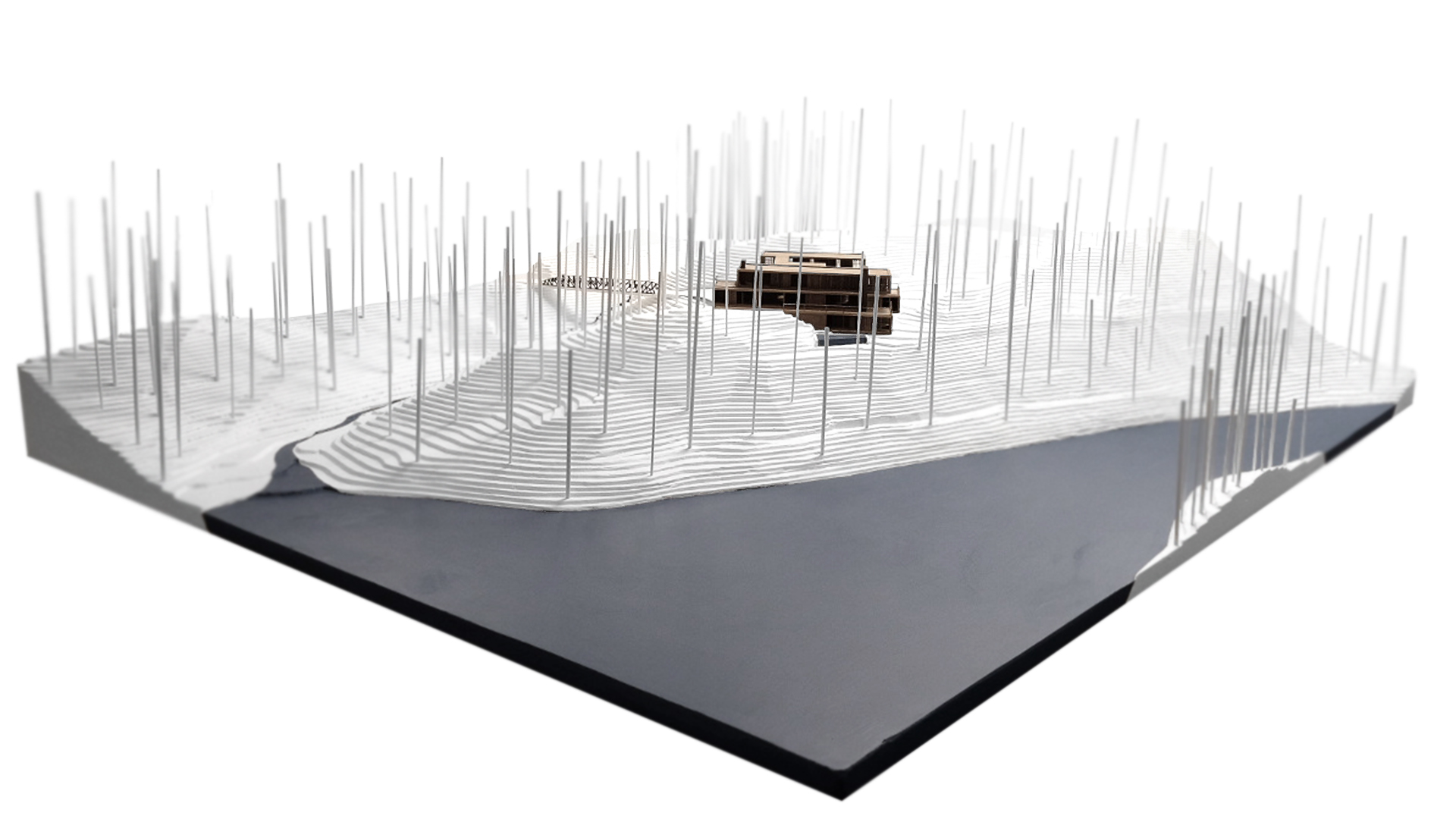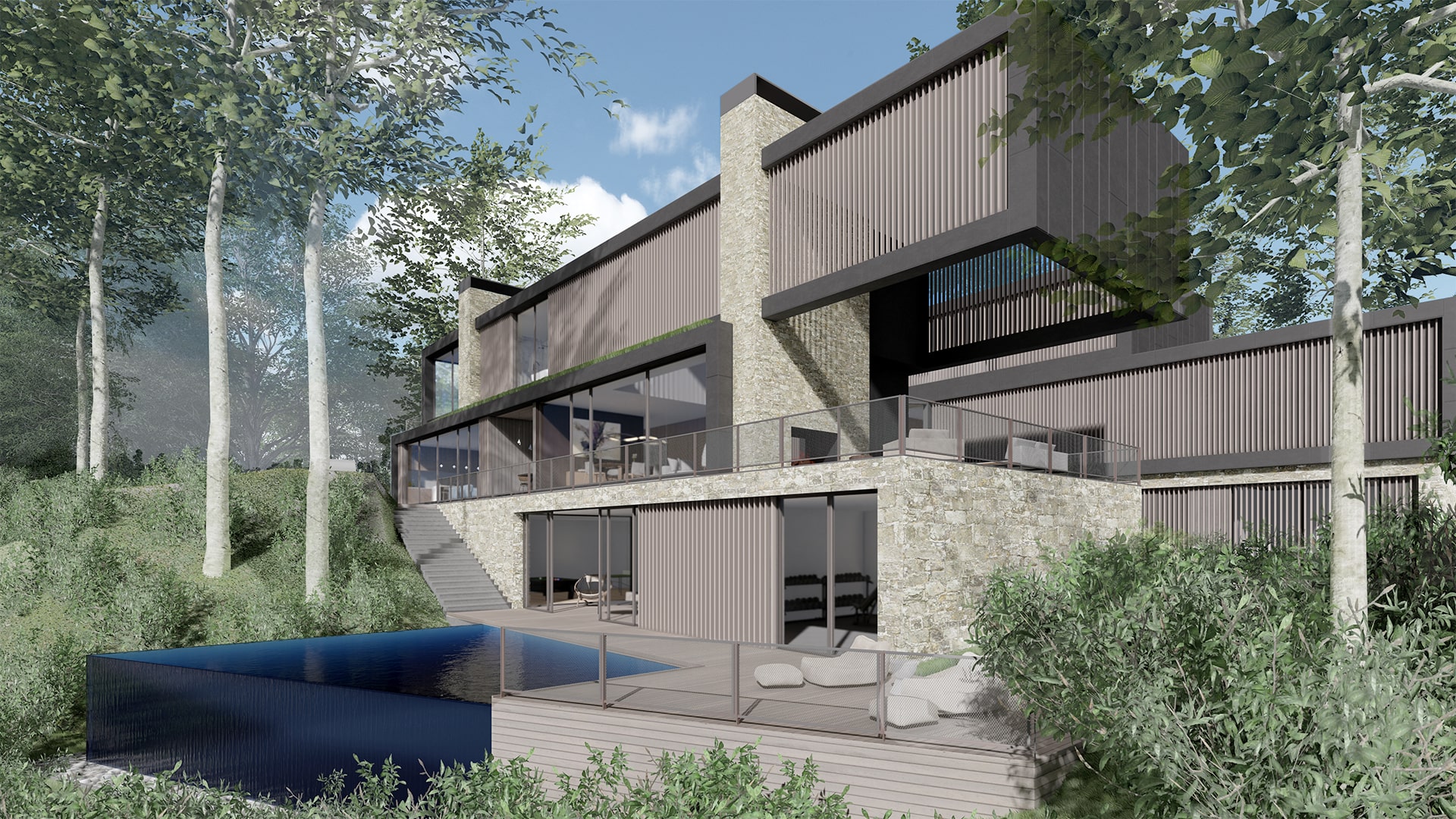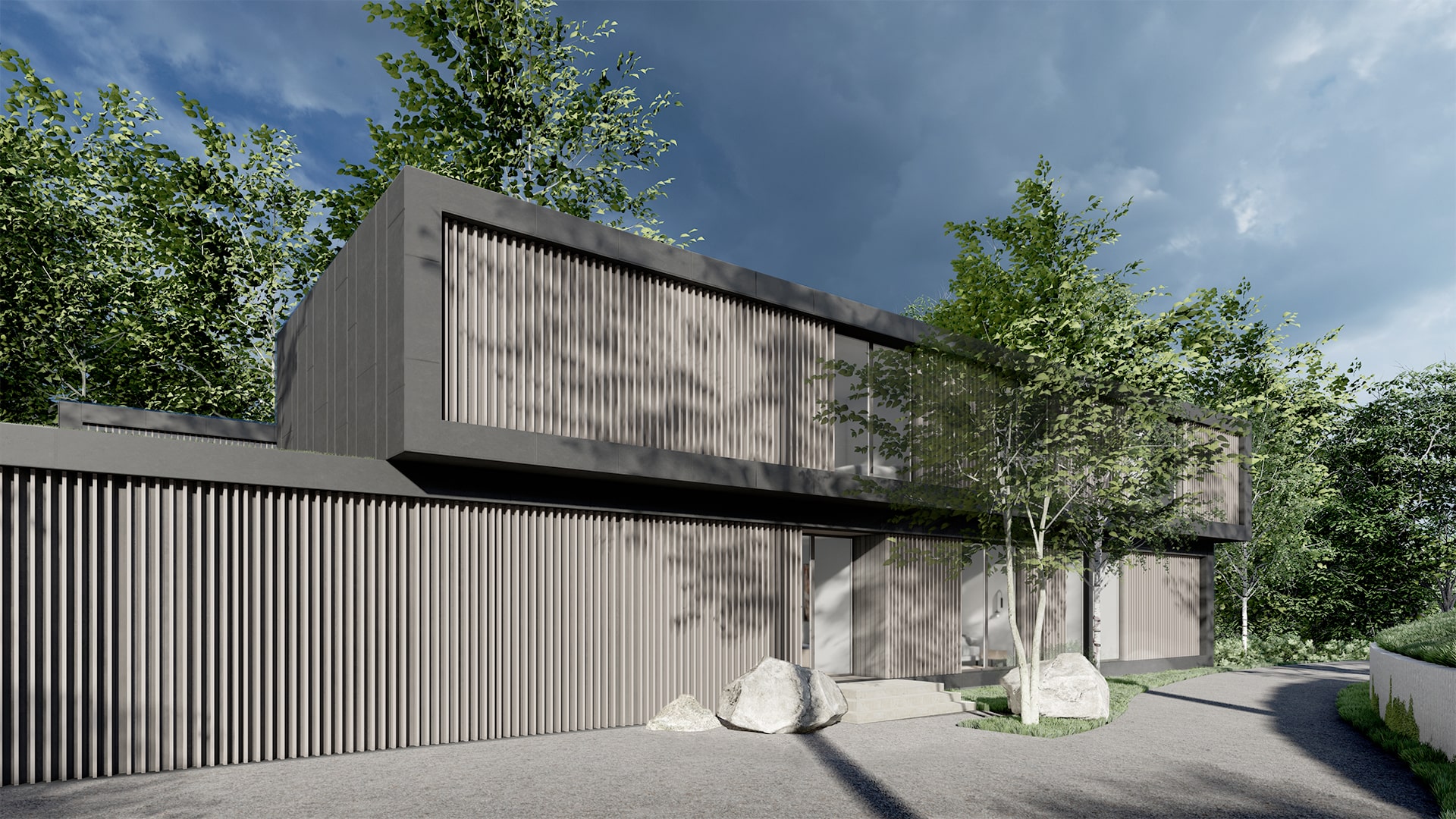Chappaqua
Chappaqua, NY
Down a long winding driveway, over a bridge, across a stream, and surrounded by preserve, this expansive lakefront residence on 13 acres feels like a luxurious retreat from civilization. The design was inspired by a desire to knit the house into the existing, steeply sloped topography. At times the threshold between house and site vanishes. Green roof becomes landscape, house becomes hill. Throughout the exterior spaces, a series of boulder-lined streambeds weave through the buildings and channel rainwater, managing runoff with an ecologically sensitive approach.
The program is split between two stacks of volumes. Through the creation of a north and south wing, each space enjoys a unique connection to the exterior. Within each stack, the volumes shift in order to create terraces, balconies, and covered outdoor spaces that take advantage of the scene below. Though the house presents as a two-story structure at the approach, the stacks march down the hill, allowing for three levels of lake views at the rear. The design celebrations circulation. Glass stairs and bridges connect one stack to the other. Movement through the house generates an architectural topography, an interior landscape that offers a physical experience drawn from nature.
The stone base of the house references the dry stacked stone walls found on the site and commonly used in the region. Above these, dark stone tiles deftly camouflage the building into the shadows. Wood infill panels and slatted louvers add texture, filter light, and mimic the adjacent groves of sun-dappled saplings. As cicadas hum and water murmurs and splashes on its way downstream, it’s easy to forget that New York City is just a short drive away.
The program is split between two stacks of volumes. Through the creation of a north and south wing, each space enjoys a unique connection to the exterior. Within each stack, the volumes shift in order to create terraces, balconies, and covered outdoor spaces that take advantage of the scene below. Though the house presents as a two-story structure at the approach, the stacks march down the hill, allowing for three levels of lake views at the rear. The design celebrations circulation. Glass stairs and bridges connect one stack to the other. Movement through the house generates an architectural topography, an interior landscape that offers a physical experience drawn from nature.
The stone base of the house references the dry stacked stone walls found on the site and commonly used in the region. Above these, dark stone tiles deftly camouflage the building into the shadows. Wood infill panels and slatted louvers add texture, filter light, and mimic the adjacent groves of sun-dappled saplings. As cicadas hum and water murmurs and splashes on its way downstream, it’s easy to forget that New York City is just a short drive away.

